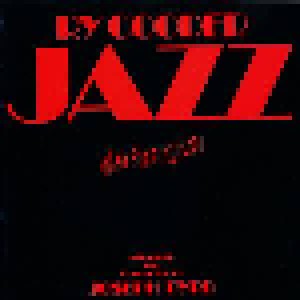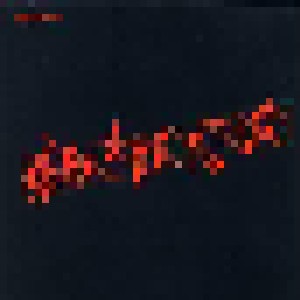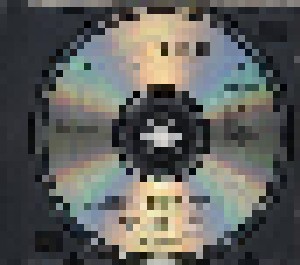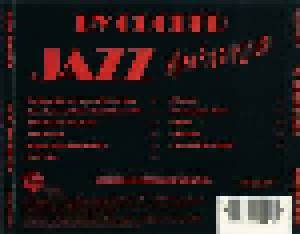Menu
Ry Cooder
Jazz
CD, 1988, Re-Release
| Herstellungsland | Deutschland |
|---|---|
| Veröffentlichungs-Jahr | 1988 |
| Orig. Release | 1978 |
| Zeit | 34:50 |
| EAN-Nr. | 075992735520 |
| Label/Labelcode | Warner Bros. Records / LC 0392 |
| Plattenfirma/Katalog-Nr. | Warner Bros. Records Inc. / 7599-27355-2 |
| Musikrichtung | Jazz: Bigband/Orchester, Fusion, Latin-/Afro-Cuban Jazz, Swing |
| Sammlungen | Gesucht | Flohmarkt |
|---|---|---|
| 20 (15 privat) | 0 | 0 |
Tracklist
I = Instrumental
L = Live
B = Bonustrack
H = Hidden Track
C = Coversong
| CD | |||
|---|---|---|---|
| Track | Titel | Zeit | Besonderheit |
| Gesamtzeit | 34:50 | ||
| 1. | Big Bad Bill Is Sweet William Now | 3:34 | |
| 2. | Face To Face That I Shall Meet Him | 3:16 | |
| 3. | The Pearls/Tia Juana | 4:18 | |
| 4. | The Dream | 5:03 | |
| 5. | Happy Meeting In Glory | 3:13 | |
| 6. | In A Mist | 2:05 | |
| 7. | Flashes | 2:17 | |
| 8. | Davenport Blues | 2:01 | |
| 9. | Shine | 3:43 | |
| 10. | Nobody | 5:07 | |
| 11. | We Shall Be Happy | 0:13 | |
Infos
Face to Face That I Shall Meet Him (trad.) "Face to Face I Shall Know Him" by Joseph Spence ['59, Bahamian Folk Guitar, Folkways FS 3844]. Songs of this title were recorded by Laura Smith ['25, Okeh 8252] and Edna Gallmon Cook ['50-'51, Gospel 151].
Davenport Blues (Beiderbecke) Bix Beiderbecke ['25, Gennett 5654]. Other recordings include Bunny Berigan ['38, Victor 26121]
In a Mist (Beiderbecke) Bix Beiderbecke, also known as "Bixology" ['27, Okeh 40916]. Other recordings include Bunny Berigan ['38, Victor 26123].
Big Bad Bill Is Sweet William Now (Ager, Yellen) Introduced in '24 by Margaret Young, with other recordings by Billy Murray, Ernest Hare and Emmett Miller ['25]. Contemporary versions include a live version by Merle Haggard ['73, I Love Dixie Blues, Capitol 11200] and Leon Redbone ['78, Champagne Charlie, Warner Brothers 2165].
Happy Meeting In Glory (trad.) Joseph Spence "There Will Be a Happy Meeting in Glory" ['59, Bahamian Folk Guitar, Folkways FS 3844]. Cooder's source, though, was actually another Spence recording, "That Glad Reunion Day" on the '65 Nonesuch LP, The Real Bahamas. Also a guitar-picking piece by Davy Graham ['78, The Complete Guitarist, Kicking Mule 138].
We Shall Be Happy (trad.) Joseph Spence ['64, Happy All the Time, Elektra EKL 273].
Nobody (Williams) Bert Williams' classic song ['06, Columbia 3423, and '13, Columbia 1289] (recorded first in 1905 by Arthur Collins for several companies).
Shine (Brown, Dabney, Mack) "That's Why They Call Me Shine" was introduced by Ada Overton Walker in the 1911 black vaudeville show His Honor the Barber. Published in 1924, it was recorded by Herb Wildorf's Cinderella Roof Orchestra [Brunswick; according to Rypens, the B-side of "Cinderella Blues"] , the California Ramblers [Columbia 127-D], the Virginians [Victor 19334], and Van & Schenck [Columbia 149-D]. It as recorded in 1932 by Bing Crosby and the Mills Brothers [Brunswick 6276] and Louis Armstrong [Columbia 2707], and was sung by Dooley Wilson as Sam in the 1942 film Casablanca. It was revived again in 1948 by Frankie Laine [Mercury 5091], Ella Fitzgerald [Decca 25354], and the Mills Brothers [Decca 24382].
Flashes (Beiderbecke) Piano composition published by Beiderbecke. Recordings include "In the dark: Flashes" by Jess Stacy ['35, European labels] and "Flashes" by Bunny Berigan ['38, Victor 26121]
The Dream (Jack the Bear, Pickett) "The Dream Rag", or the existing fragment of it, may be the earliest surviving piece in the ragtime genre. It was written by Jesse Pickett (although sometimes attributed to a contemporary Jack "the Bear" Wilson) and a young Eubie Blake learned it from Pickett at the Chicago World's Fair of 1894. (Ragging It: Getting Ragtime Into History by H. Loring White, and Dvorak to Duke Ellington: A Conductor Explains America's Music by Maurice Peress.) Rypens states that it was introduces by Blake on AEI in the '20s, but I don't see it mentioned in Lord's discography. After a couple of unreleased recordings for Circle ['49 and '51] it was finally recorded and released by Blake on The Eighty-Six Years of Eubie Blake ['68, CBS C2S847]. James P. Johnson recorded it for Alan Lomax as "The Bull Diker's Dream", an unreleased Library of Congress Recording, in 1938, and then in 1944 as "The Dream" [Asch 551-1, Stinson SLP21].
Pearls (Morton) Jelly Roll Morton ['23, piano solo, Gennett 5323, '26 Vocalion 1020; '27, with Red Hot Peppers, Victor 20948]
Tia Juana (Morton; actually, Conley, Rodemich) Gene Rodemich Orchestra ['24, Brunswick 2680], Jelly Roll Morton (piano solo) ['24, Gennett 5632], the Wolverine Orchestra ['24, Gennett 5565].
Davenport Blues (Beiderbecke) Bix Beiderbecke ['25, Gennett 5654]. Other recordings include Bunny Berigan ['38, Victor 26121]
In a Mist (Beiderbecke) Bix Beiderbecke, also known as "Bixology" ['27, Okeh 40916]. Other recordings include Bunny Berigan ['38, Victor 26123].
Big Bad Bill Is Sweet William Now (Ager, Yellen) Introduced in '24 by Margaret Young, with other recordings by Billy Murray, Ernest Hare and Emmett Miller ['25]. Contemporary versions include a live version by Merle Haggard ['73, I Love Dixie Blues, Capitol 11200] and Leon Redbone ['78, Champagne Charlie, Warner Brothers 2165].
Happy Meeting In Glory (trad.) Joseph Spence "There Will Be a Happy Meeting in Glory" ['59, Bahamian Folk Guitar, Folkways FS 3844]. Cooder's source, though, was actually another Spence recording, "That Glad Reunion Day" on the '65 Nonesuch LP, The Real Bahamas. Also a guitar-picking piece by Davy Graham ['78, The Complete Guitarist, Kicking Mule 138].
We Shall Be Happy (trad.) Joseph Spence ['64, Happy All the Time, Elektra EKL 273].
Nobody (Williams) Bert Williams' classic song ['06, Columbia 3423, and '13, Columbia 1289] (recorded first in 1905 by Arthur Collins for several companies).
Shine (Brown, Dabney, Mack) "That's Why They Call Me Shine" was introduced by Ada Overton Walker in the 1911 black vaudeville show His Honor the Barber. Published in 1924, it was recorded by Herb Wildorf's Cinderella Roof Orchestra [Brunswick; according to Rypens, the B-side of "Cinderella Blues"] , the California Ramblers [Columbia 127-D], the Virginians [Victor 19334], and Van & Schenck [Columbia 149-D]. It as recorded in 1932 by Bing Crosby and the Mills Brothers [Brunswick 6276] and Louis Armstrong [Columbia 2707], and was sung by Dooley Wilson as Sam in the 1942 film Casablanca. It was revived again in 1948 by Frankie Laine [Mercury 5091], Ella Fitzgerald [Decca 25354], and the Mills Brothers [Decca 24382].
Flashes (Beiderbecke) Piano composition published by Beiderbecke. Recordings include "In the dark: Flashes" by Jess Stacy ['35, European labels] and "Flashes" by Bunny Berigan ['38, Victor 26121]
The Dream (Jack the Bear, Pickett) "The Dream Rag", or the existing fragment of it, may be the earliest surviving piece in the ragtime genre. It was written by Jesse Pickett (although sometimes attributed to a contemporary Jack "the Bear" Wilson) and a young Eubie Blake learned it from Pickett at the Chicago World's Fair of 1894. (Ragging It: Getting Ragtime Into History by H. Loring White, and Dvorak to Duke Ellington: A Conductor Explains America's Music by Maurice Peress.) Rypens states that it was introduces by Blake on AEI in the '20s, but I don't see it mentioned in Lord's discography. After a couple of unreleased recordings for Circle ['49 and '51] it was finally recorded and released by Blake on The Eighty-Six Years of Eubie Blake ['68, CBS C2S847]. James P. Johnson recorded it for Alan Lomax as "The Bull Diker's Dream", an unreleased Library of Congress Recording, in 1938, and then in 1944 as "The Dream" [Asch 551-1, Stinson SLP21].
Pearls (Morton) Jelly Roll Morton ['23, piano solo, Gennett 5323, '26 Vocalion 1020; '27, with Red Hot Peppers, Victor 20948]
Tia Juana (Morton; actually, Conley, Rodemich) Gene Rodemich Orchestra ['24, Brunswick 2680], Jelly Roll Morton (piano solo) ['24, Gennett 5632], the Wolverine Orchestra ['24, Gennett 5565].









